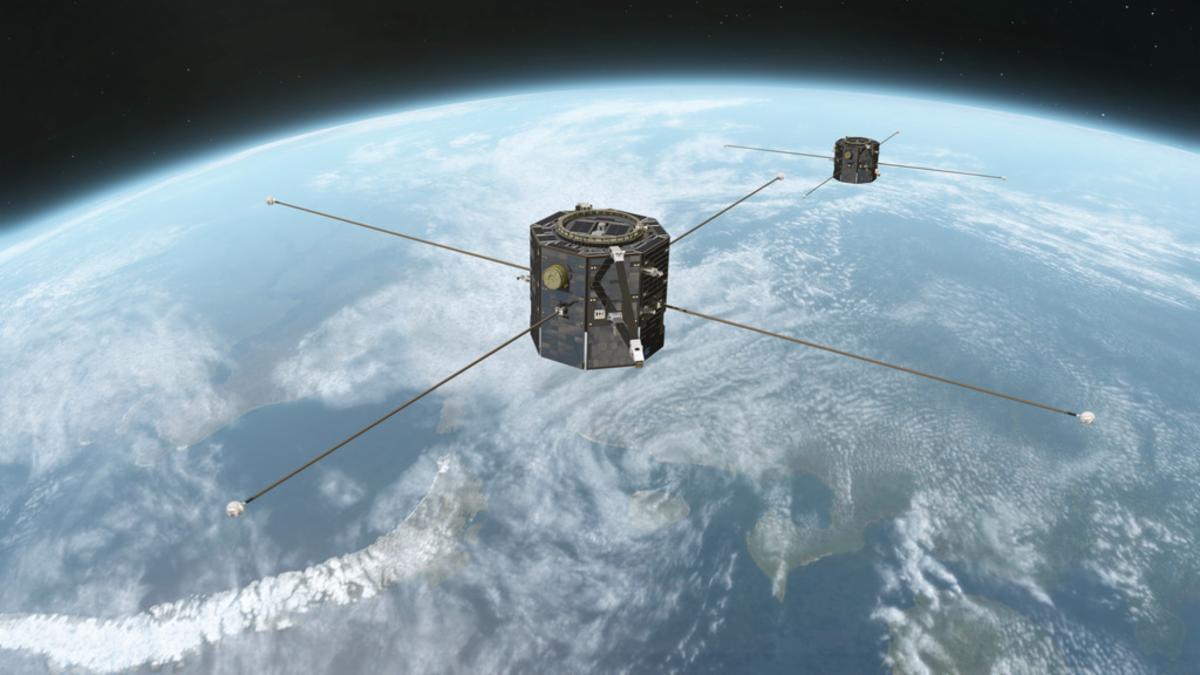Article Body
North Pole, 2025. Above the frozen Arctic, two identical satellites—TRACERS—silently orbit in tandem, scanning the invisible battlefront where Earth’s magnetic shield meets violent solar winds. Launched in April 2024 from Vandenberg Space Force Base, NASA’s Tandem Reconnection and cusp electrodynamics Reconnaissance Satellites (TRACERS) are on a bold mission: to decode one of the most explosive, least understood phenomena in space physics—magnetic reconnection.
This matters now more than ever. As our lives become increasingly dependent on GPS, satellites, and power grids—all vulnerable to space weather—understanding how magnetic reconnection triggers geomagnetic storms could be the key to protecting global infrastructure.
Why 2025 is the Critical Year for Solar Storm Preparedness
The Sun’s activity follows an 11-year cycle, and 2025 marks the solar maximum, the peak of solar eruptions and coronal mass ejections (CMEs). These eruptions send charged particles hurtling toward Earth, sometimes with catastrophic consequences.
In March 2024, a solar flare disrupted airline communications over the Pacific for nearly 12 hours. In May, a geomagnetic storm nearly knocked out power grids in Scandinavia. “We’re already seeing the early signs of an extreme solar season,” said Dr. Ellen Christensen, solar physicist at NASA’s Goddard Space Flight Center. “TRACERS is our best shot at understanding how these solar events ripple into Earth’s magnetic field.”
What Is Magnetic Reconnection—and Why Is It So Dangerous?
Magnetic reconnection is the cosmic equivalent of short-circuiting a power grid—except on a planetary scale. It occurs when opposing magnetic fields snap, realign, and explosively release energy.
Each event can release energy equivalent to billions of atomic bombs, altering space weather, disturbing GPS, and even threatening astronauts in orbit. But where, how fast, and how often this happens is still unclear. TRACERS aims to answer those questions.
“It’s like trying to understand lightning by flying through a thunderstorm with two synchronized weather balloons,” said Christensen.
🔥 Key Takeaway:
Magnetic reconnection isn’t science fiction—it’s an invisible force shaping your digital life.
How Will TRACERS Study Magnetic Reconnection?
TRACERS is a first-of-its-kind dual-satellite mission, flying side by side through the “cusp”—a funnel-shaped region near the magnetic poles where Earth’s field lines open to space.
Each satellite is equipped with magnetometers, ion sensors, and electric field detectors, allowing them to capture data milliseconds apart. This gives scientists a 3D view of magnetic reconnection in real time.
The tandem design is essential. “With just one satellite, you only get a snapshot,” explained Dr. Victor Leclair, TRACERS project scientist. “With two, you can track changes in motion and structure. It’s like going from a still photo to a high-speed film.”
Why Does This Matter for Your Daily Life?
A single magnetic reconnection event can set off a geomagnetic storm that knocks out power grids, scrambles flight radar, and disables satellites.
In 1989, a storm caused by reconnection triggered a nine-hour blackout in Québec. Today, with over 3,400 active satellites and the rise of electric vehicles and AI-powered logistics, the stakes are even higher.
“We’re not just talking about auroras. We’re talking about the foundations of our economy and security,” said Leclair.
👇 Related People Also Ask (PAA) Question:
What is the impact of magnetic reconnection on Earth’s technology?
It can disrupt GPS, shut down power grids, and interfere with satellite operations and communication systems—especially during solar maximum years like 2025.
What Sets TRACERS Apart from Other NASA Missions?
Unlike flagship missions like MMS (Magnetospheric Multiscale), which focused on the equatorial magnetosphere, TRACERS targets high-latitude reconnection, where energy from the Sun penetrates more directly into Earth’s atmosphere.
It also aligns with NASA’s heliophysics Big Year, a 2024–2025 initiative to coordinate solar observations across space agencies worldwide.
“This is a golden window,” Christensen said. “Solar activity is peaking, instruments are better than ever, and the world is finally paying attention.”
What Can We Expect in the Coming Months?
TRACERS is expected to capture its first full reconnection event by late July 2025. NASA plans to release preliminary data through its heliophysics Open Data Portal, inviting researchers and students to analyze the findings.
The mission could help update NOAA’s space weather prediction models, enhance early warning systems for solar storms, and influence future satellite designs to be more resistant to space weather impacts.
✅ What You Should Do Now:
-
Bookmark NASA’s TRACERS Mission Page for live updates.
-
Check your smartphone’s GPS reliability during periods of high solar activity.
-
If you’re in a high-latitude region, watch the aurora forecasts—reconnection events often precede brilliant displays.
💡 Pro Tip: Follow @NASASun on X (formerly Twitter) for solar storm alerts.
So, Will TRACERS Solve the Mystery?
TRACERS won’t eliminate solar storms, but it may make them predictable—and that’s a game-changer.
Imagine utilities shutting down vulnerable grid segments before a storm hits. Or pilots rerouting flights with hours of notice instead of minutes.
“We’re no longer just bracing for impact,” said Leclair. “We’re getting smart about it.”
Final Thought
Next time your GPS falters, or you see northern lights shimmering above, remember—invisible forces from 93 million miles away are at play, and NASA’s TRACERS is watching.
Do you think enough is being done to protect Earth from solar storms?
Share your thoughts. Tag a friend who loves space science.
FAQs:
What is NASA’s TRACERS mission?
TRACERS is a twin-satellite NASA mission studying magnetic reconnection in Earth’s polar cusp to better predict space weather impacts.
Why is magnetic reconnection important in 2025?
2025 marks the solar maximum, increasing the risk of geomagnetic storms. Understanding reconnection helps protect GPS, satellites, and power grids.
How does magnetic reconnection affect humans on Earth?
It disrupts GPS, satellites, and power systems, potentially affecting navigation, communications, and even airline safety.


Comments